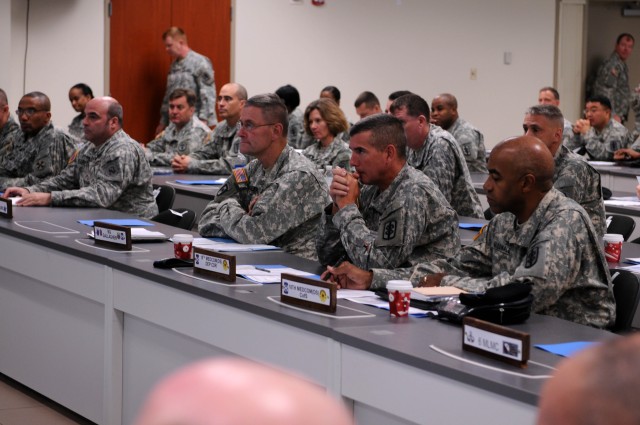SCHOFIELD BARRACKS, Hawaii - Personnel from U.S. Pacific Command, 8th Army, U.S. Army Pacific, the Army Medical Department, 8th Theater Support Command, 65th Medical Brigade, and 18th Medical Deployment Support Command gathered to participate in the first Pacific Integration Medical Conference Jan. 4-6.
The 18th MDSC hosted the conference as the participants' main focus was integrated Army health support. The conference was held at the 1st Lt. Nainoa K. Hoe Battle Command Training Center on Schofield Barracks, Hawaii.
This was the first time many of the participants were in one room together and, as expected, there were some disagreements. This was part of the overall plan for this conference.
"Some of the issues discussed needed to be discussed in a forum like this one," said Lt. Col. Johnny Manning, G3 plans officer for the 18th Medical Deployment Support Command.
The Pacific region has been home to the 18th MEDCOM for a long time. The command's change of responsibilities to the medical theater-enabling command and a move from South Korea to Hawaii in 2008 made hosting this conference a critical step in recognizing many of the participant's roles, tasks and responsibilities.
"This is about getting the right answer for the whole theater," said Brig. Gen. Keith Gallagher, Pacific Region Medical Command commander, and host of the event. "Our job is to be able to build a robust Army Health Support system. Look in the mirror -you're a part of change in the Pacific."
"Things we do here will give us a broader view of what Pacific Integration is and give us details of how to do all medical tasks, said Col. Fred Gellert, U.S. Army Pacific G3.
Pacific Integration is the transformation of U.S Army Pacific to the single Army service component command within the U.S. Pacific Command area of responsibility. USARPAC will enable 8th Army, located in South Korea, to focus on its warfighting mission. USARPAC, as the theater Army, synchronizes Army forces in the Pacific to optimize combat forces. Eighth Army is the warfighting headquarters supporting U.S. Forces Korea.
Conference participants discussed force structure under medical Pacific Integration, relationships with each other, noncombatant evacuation operations, and patient movement to help facilitate clear lines of communication and reporting between generating and operational forces. The goal is to ensure a smooth transition to a single Army service component command in the Pacific.
Participants felt they had a better understanding of each other's roles and tasks after the conference and ready for the USARPAC and 8th Field Army Pacific Integration conference held Jan. 10-13.




Social Sharing